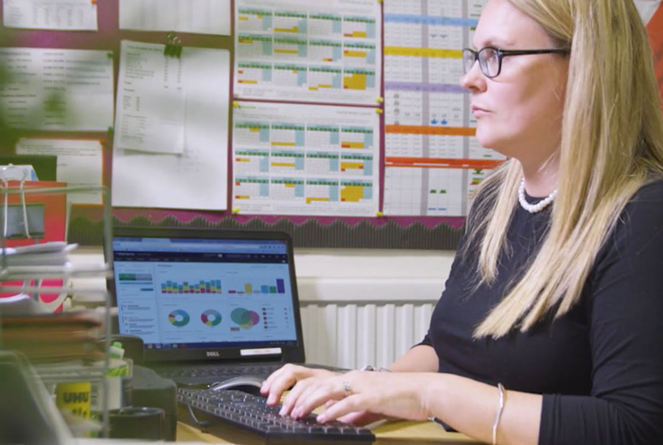Your school website is becoming more important for Ofsted inspections and the recent DfE update highlights that. Take a look at our guidance to make sure your school website is compliant.

New and updated requirements from September 2022
Schools and trusts are required to publish certain policies and information on their school website to maintain compliance, as defined by Ofsted and Department for Education (DfE) requirements. On 15 September 2022, at the start of the new school year, this guidance was updated, and schools have a range of new publishing information requirements to follow.
All of these additions and updates are included in our interactive checklist, which can be downloaded here. The checklist has been broken down into three easy-to-read bite-size sections: Essential, Desirable & Expert. You will be able to tick each section as you go, so that you can ensure your website is up-to-date, easy-to-use and as compliant as possible.
Deferring Ofsted inspections
Though not directly related to school website compliance, it’s important to note that Ofsted has removed its policy on deferral due to Coronavirus (COVID-19) disruption from its Deferring Ofsted inspections guidance, as of 1 September 2022.

New requirements to ensure DfE website compliance
The following requirements have been added to the guidance, and must now be accessible on your school website:
- School opening hours
Schools should publish online their opening and closing times, and the total hours per week this amounts to (for example 32.5 hours). Schools should also show the compulsory times they are open, from the official start of the school day (morning registration) to the official end of the compulsory school day. It should include breaks, but not any optional activities that take place before or after school.
- School uniforms
There is statutory guidance on the cost of school uniforms, which schools must consider when developing and implementing their school uniform policy. Uniform policies then need to be published on their school website, be easy to understand, and in particular should clearly state;
- Whether an item is mandatory or optional.
- If an item only needs to be worn at certain times of the year (for example, if it’s summer or winter uniform).
- Whether generic items are acceptable, or if a branded item is required.
- Whether an item has to be purchased from a specific retailer, or can be purchased from multiple vendors, including from second-hand retailers.

Updated requirements to ensure DfE website compliance
These existing items have now been updated with further guidance:
- Test, exam and assessment results
Key Stage 2: Schools should continue to display their most recent Key Stage 2 performance measures, as published by the Secretary of State, on their school website. For most schools, these will be the performance measures published for the 2018 to 2019 academic year, and these should be clearly marked as such. We recommend using the following disclaimer:
“The government will not publish KS2 school level data for the 2021 to 2022 academic year. They have archived data from the 2018 to 2019 academic year because they recognise that the data from that year may no longer reflect current performance.”
Key Stage 4 and 16 to 18: performance measures will be published by the Secretary of State for these age groups for the 2021 to 2022 academic year. Schools will need to update their school website to include the latest measures which, once published, will be based on tests, exams and assessments for KS4 and sixth form from the 2021 to 2022 academic year. We recommend using this disclaimer:
“Given the uneven impact of the pandemic on school and college performance data, the government has said you should not make direct comparisons between the performance data for one school or college and another, or to data from previous years.”
- Pupil premium and recovery premium combination
- All schools that receive pupil premium funding are required to publish a pupil premium strategy statement each year, no later than December 31.
- In the strategy statement, you must explain how your pupil premium and recovery premium is being spent, and the outcomes that are being achieved for pupils. This should be written in an accessible way that governors and parents can understand.
- You must use the DfE website template to produce your statement, which can be found on the pupil premium guidance page alongside completed examples and guidance for school leaders. The template has been designed to ensure that your statement reflects the requirements in the pupil premium conditions of grant. This includes a requirement for pupil premium and recovery premium to be spent in line with the department’s ‘menu of approaches’ from the start of the 2022 to 2023 academic year. The menu can be found in the document ‘Using pupil premium: guidance for school leaders’, on the pupil premium guidance page.
- We recommend that schools plan their pupil premium use over three years, but still update the statement each year to reflect spending activity for that academic year, and the impact of pupil premium in the previous academic year.
Is your school website in need of a refresh?
To give Ofsted inspectors the best first impression, your school website should be easy to navigate and provide clear information for parents. We have experience working with thousands of schools and trusts, allowing them to update and maintain their website with our feature-rich content management system. With a revitalised and organised website, you’ll see increased engagement with the school, convince more parents to enrol their children, and have a much easier time updating parents.
If you’re interested in our services and learning more about how we can help your school or trust with DfE website compliance, check out our school websites and communication tools here.


/Primary%20school%20.jpg?width=2000&name=Primary%20school%20.jpg)








.png?width=940&height=788&name=Lingfield%20College%20Case%20Study%20(5).png)
-1.png?width=1000&height=833&name=National%20Association%20of%20Head%20Teachers%20(3)-1.png)
-3.png?width=1080&height=1080&name=Untitled%20design%20(10)-3.png)





